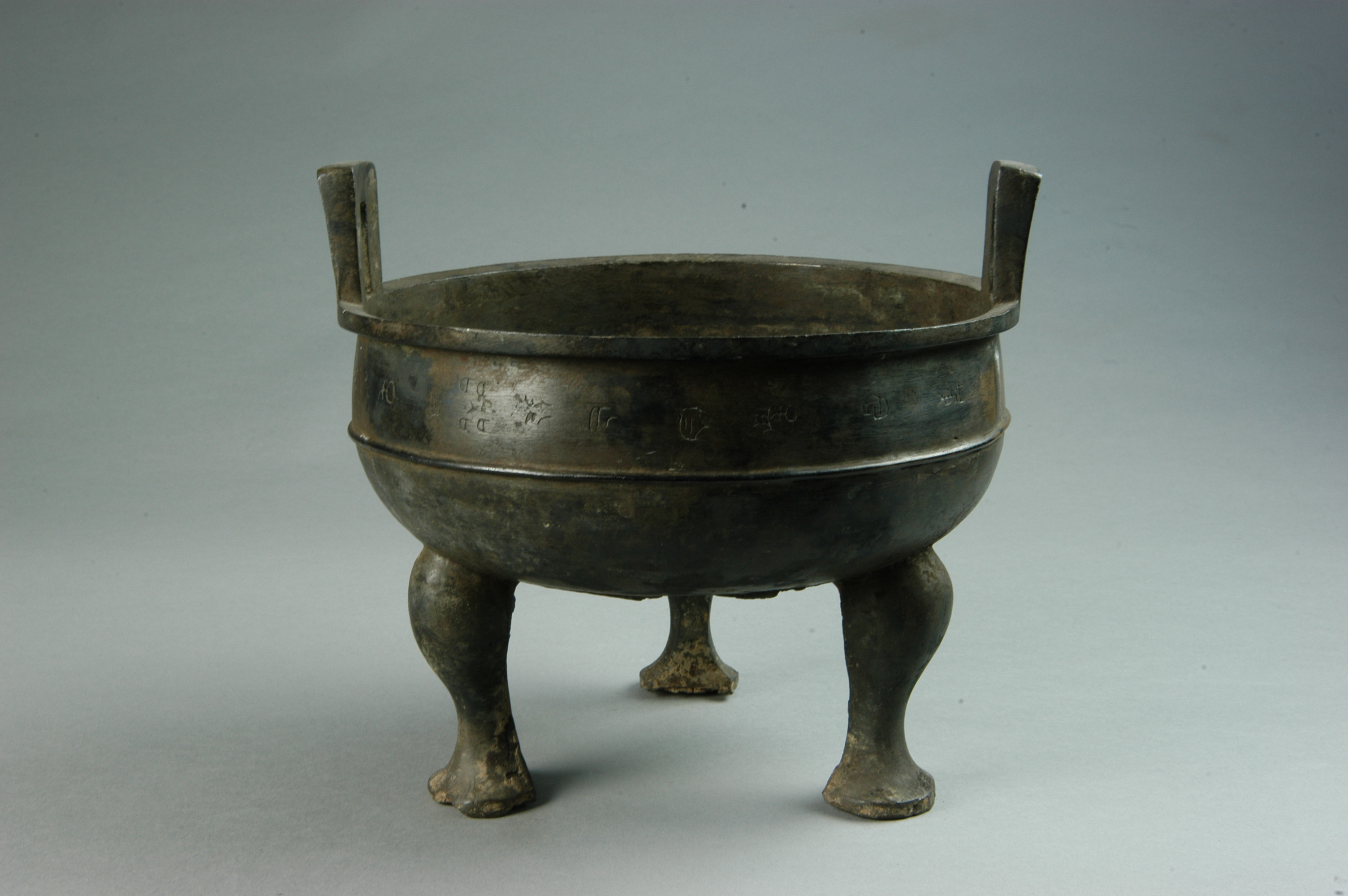Date: Spring and Autumn Period (770-476 BC)
Provenance: Unearthed from the conjugal tomb of King Meng of the Huang, Baoxiang Temple, Guangshan, Henan province, 1983
Measurements: Height: 27 cm
The bronze ding cauldron features an open mouth, an upturned flat rim with a pair of upright ears on two sides, a slightly tapered neck, a bulging body, a rounded bottom, and three legs with hoof-shaped feet.
The body is adorned with a band of bow string, and there is an inscription of fourteen Chinese characters between the bow string and the rim which translate to "King Meng of the Huang State commissioned this utensil for travels, wishing for eternal blessings for my descendants." Huang was a small vassal state during the Eastern Zhou Dynasty (770-221 BC) with few historical texts being passed down. Situated in the Yangtze-Huaihe river basin, it served as a buffer against the expanding influence of the Chu State in the southern region as the power of the Zhou royal court waned. In 704 BC, Huang, along with the neighboring Sui, resisted Chu's alliance. However, with the further decline of the Zhou royal court and the increasing power of Chu, Huang succumbed to Chu's conquest in 648 BC. This bronze ding cauldron provides a glimpse into the cultural aspects of the Huang more than 2,600 years ago.

